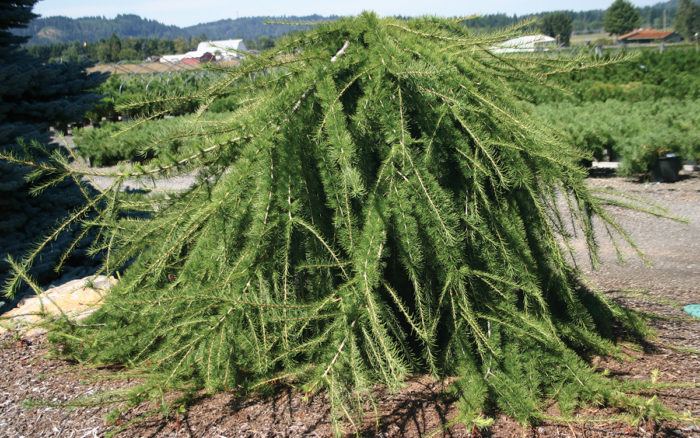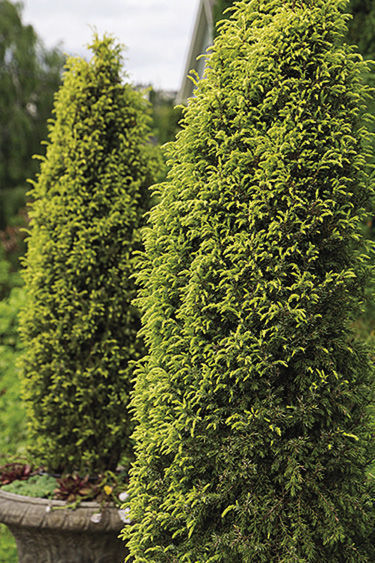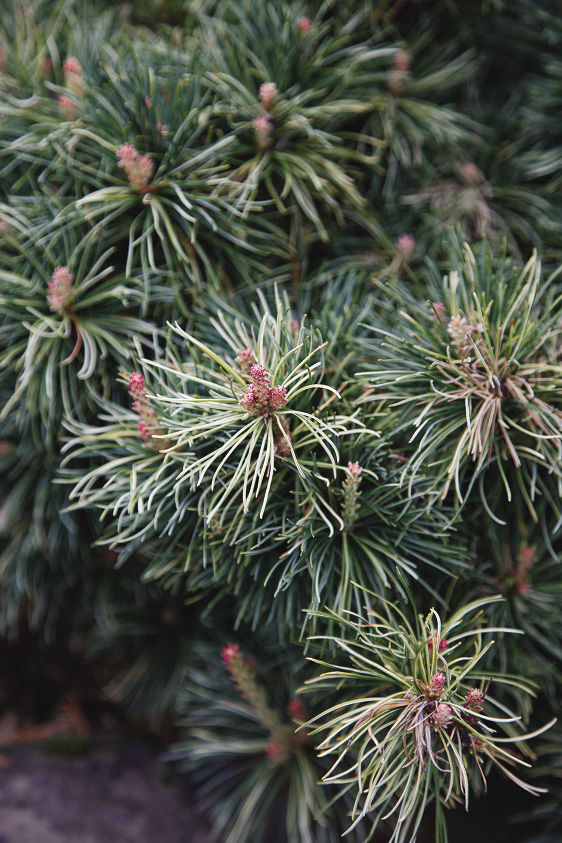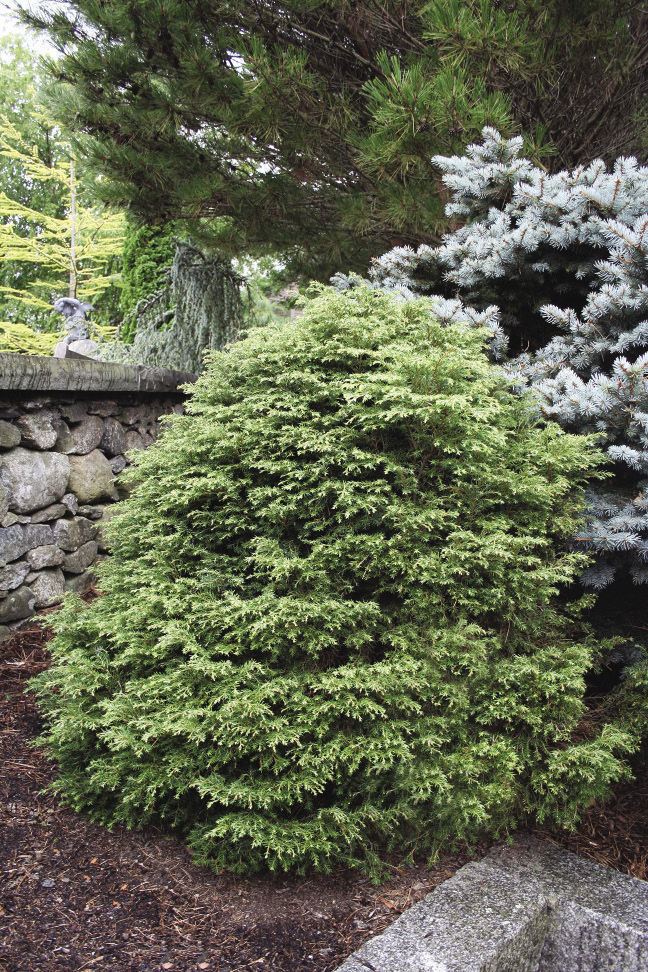
See regional picks for conifers, and read the article by Andrew Brand for even more ideas.
“Evergreen conifers provide the bones for any landscape. They offer a variety of colors, textures and habits all year long. While conifers are sometimes relegated to the rear or boundary of a property where they politely screen out nosy neighbors or unkempt yards, these plants can make wonderful additions to all parts of a garden.” Read more Conifers for Any Size Landscape.

1. ‘Gold Cone’ Juniper
Name: Juniperus communis ‘Gold Cone’
Zones: 2 to 6
Size: 8 feet tall and 2 feet wide
Conditions: Full sun; moderately moist, well-drained soil
This plant is superbly hardy, needs no pruning or fussing, and has a bright, sulphur-lime flush of new growth in spring. By the end of summer, the color is a less vibrant, glaucous green, but still pleasing. ‘Gold Cone’ has an upright form that makes it a great nesting spot for small songbirds. This plant is happiest in northern climes and sulks in hot, humid conditions. It is an eye-catching focal point that looks terrific as a hedge, in a container, or even pruned to create a spiral or obelisk, if you are so inclined.

2. ‘Varied Directions’ Larch
Name: Larix decidua ‘Varied Directions’
Zones: 3 to 6
Size: 6 to 8 feet tall, can spread 12 to 15 inches per year to cover a large area over time
Conditions: Full sun; moist, well-drained soil
Tower Hill horticulturist Jim Nicewicz calls this plant “lazy larch.” Our specimen was planted back in the early 1990s and encouraged to grow as an unusual spreading ground cover. It now spans an area that is at least 20 feet square. In summer, it creates a soft green carpet. In autumn, the needles turn yellow-orange before dropping off, revealing a network of nubby, crossing, ground-hugging branches. In spring, the nubs flush new, soft-green needles in charming whorls. A taller weeping specimen can be created by either staking or grafting onto an upright stem. In this way, you can form a mounding or weeping plant with flexible pendent twigs that shoot suddenly upward or sideways in varied directions.

3. Snow in the Valley Japanese White Pine
Name: Pinus parviflora ‘Tanima no yuki’
Zones: 4b to 7
Size: 3 feet tall and 4 feet wide
Conditions: Full sun to partial shade; fertile, well-drained soil
This plant’s Japanese cultivar name translates to snow (yuki) in (no) the valley (tanima). It describes a striking, slow-growing form of the beautiful Japanese white pine. In spring, fresh white needles with a slight twist emerge from pink candles for a wonderful, multicolored effect. The white needles hold their color throughout the summer. Each year, this mounding plant adds 3 to 4 inches of growth, topping out at around 3 feet tall and 4 feet wide. It can be grown in a container or in well-drained organic soil. Give it some protection from intense midday sun, which can scorch the needles. Japanese white pines are very hardy, tolerating temperatures down to –25° Fahrenheit.

4. ‘Palomino’ Hemlock
Name: Tsuga canadensis ‘Palomino’
Zones: 4 to 7
Size: 2 feet tall and 3 feet wide in 10 years
Conditions: Full to partial shade; moderately moist, well-drained soil
Not many modern landscapes can accommodate a full-fledged hemlock, but with so many dwarf cultivars available, it’s easy to find one to fit almost any garden. ‘Palomino’ forms a very dense, slow-growing globe. All parts of this plant are reduced in size, including petite needles that match the form beautifully, giving it a delicate, almost lacy appearance. Hemlocks prefer a bit of shade, making them especially useful in dark locations where other conifers could become thin or leggy. In fact, hemlocks benefit from a location shielded from winter sun and winds. Rich, acidic soil suits them just fine, though the straight species occurs in a variety of soils, from moist to rocky. Like all of the conifers on this page, we have found ‘Palomino’ to be deer resistant without any special protection.
Joann Vieira is the director of horticulture at Tower Hill Botanic Garden in Boylston, Massachusetts, and gardens by night at her home in Princeton, Massachusetts.

















Comments
Log in or create an account to post a comment.
Sign up Log in